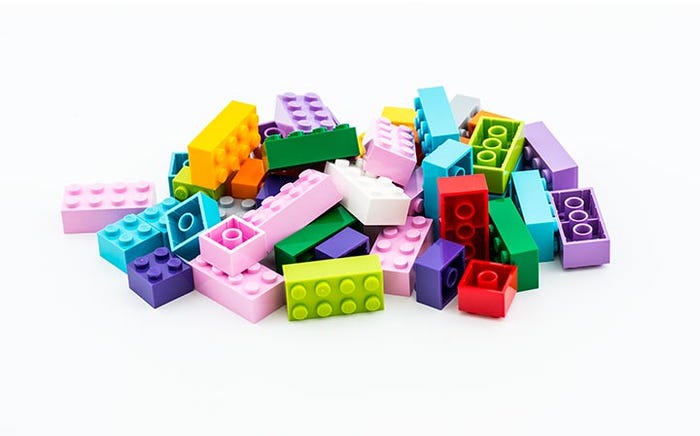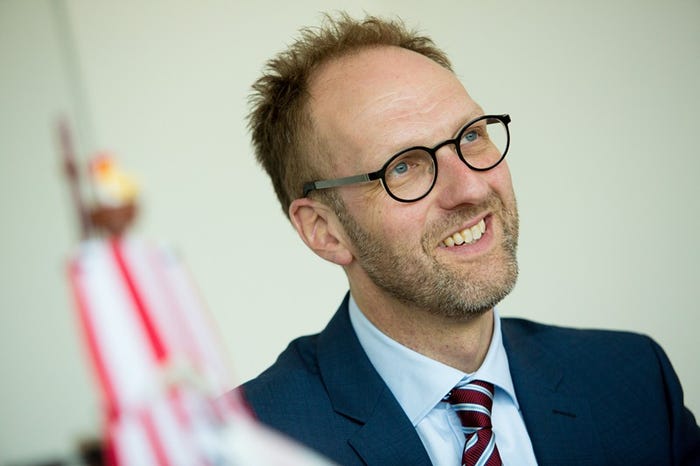With the announcement that it is investing DKK 1 billion in the establishment of the Lego Sustainable Materials Center, the Lego Group (Billund, Denmark) is making good on what it called in 2012 ”an obligation” to minimize the environmental impact by of its iconic LEGO bricks by finding sustainable replacements for the materials used in their production. The decision to boost the search for sustainable materials was taken at the recent General Assembly of the Lego Group in May 2015.
June 19, 2015
With the announcement that it is investing DKK 1 billion in the establishment of the Lego Sustainable Materials Center, the Lego Group (Billund, Denmark) is making good on what it called in 2012 ”an obligation” to minimize the environmental impact by of its iconic LEGO bricks by finding sustainable replacements for the materials used in their production. The decision to boost the search for sustainable materials was taken at the recent General Assembly of the Lego Group in May 2015.
|
Jørgen Vig Knudstorp, CEO and President of the Lego Group. |
“This is a major step for the Lego Group on our way towards achieving our 2030 ambition on sustainable materials,” said Jørgen Vig Knudstorp, CEO and President of the Lego Group.
“We have already taken important steps to reduce our carbon footprint and leave a positive impact on the planet by reducing the packaging size, by introducing FSC certified packaging and through our investment in an offshore wind farm. Now we are accelerating our focus on materials.”
In 2014, more than 60 billion Lego elements were made. Finding alternatives to the materials used to make these bricks would therefore significantly reduce the Lego Group’s impact on the planet.
The new Lego Sustainable Materials Center will be dedicated to research, development and implementation of sustainable raw materials to manufacture Lego elements, as well as packaging materials. It will be based at the Lego Group’s headquarters. Lego expects to recruit more than 100 materials specialists over the coming years to work on realizing these sustainability ambitions. The Center will take organizational shape over the next two years and is expected to include satellite functions located in relevant locations around the globe. In addition, the center will collaborate and develop partnerships with relevant external stakeholders and experts. Founded in 1932, the Lego Group still hews to the motto of founder Ole Kirk Kristiansen, who insisted that “Only the best is good enough.” Today, Lego uses materials are carefully selected selected materials featuring specific properties such as strength, durability, clutch power and color fastness, which are needed for the building system to provide what the Group calls “the overall Lego experience.” Maintaining these properties in the Lego bricks, with no compromise in the quality or safety standards set by the Lego Group and expected by parents, makes the search for replacement materials a real challenge.
Founded in 1932, the Lego Group still hews to the motto of founder Ole Kirk Kristiansen, who insisted that “Only the best is good enough.” Today, Lego uses materials are carefully selected selected materials featuring specific properties such as strength, durability, clutch power and color fastness, which are needed for the building system to provide what the Group calls “the overall Lego experience.” Maintaining these properties in the Lego bricks, with no compromise in the quality or safety standards set by the Lego Group and expected by parents, makes the search for replacement materials a real challenge.
The Lego Group will not be going it alone, having in recent years partnering with companies and experts on the task with the much-needed know-how in the field. Among others, the Group has entered into a collaboration agreement with WWF that was agreed in spring 2015, which focuses on better assessing the overall sustainability and environmental impact of new bio-based materials for Lego elements and packaging.
“There is no common definition of a sustainable material,” Jørgen Vig Knudstorp said. “Several factors influence the environmental sustainability of a material—the composition of the material, how it is sourced and what happens when the product reaches the end of its life. “
“What we announce today is a long-term investment and a dedication to ensuring the continued research and development of new materials that will enable us to continue to deliver great, high quality creative play experiences in the future, while caring for the environment and future generations. It is a daunting and exciting challenge.”
About the Author(s)
You May Also Like



